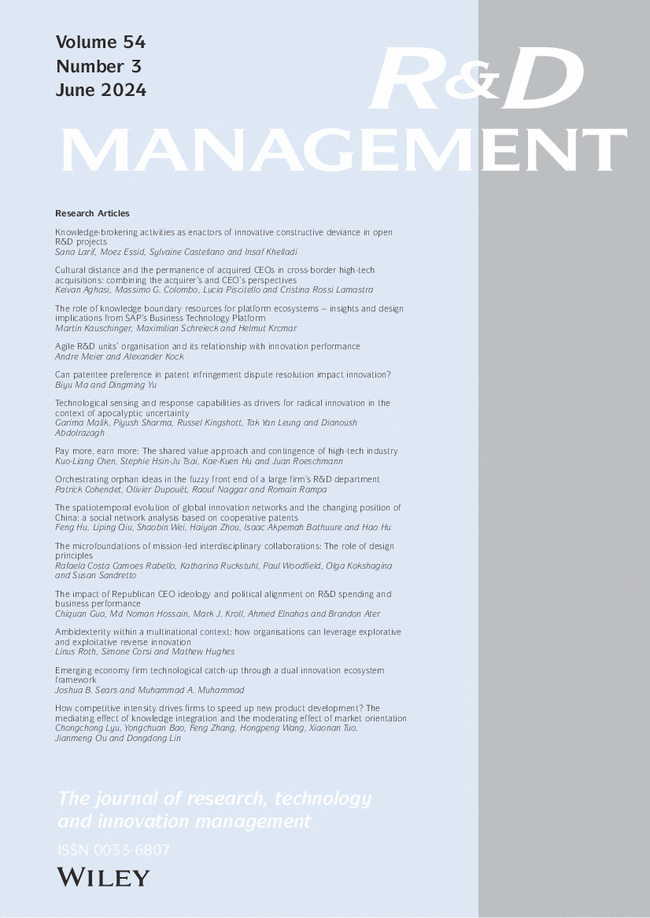社会创新与社会企业家精神的自上而下模式。应对COVID - 19的拼凑和敏捷性:来自中国的病例
IF 6.7
2区 管理学
Q1 BUSINESS
引用次数: 25
摘要
社会创新和社会企业家精神通常遵循自下而上的模式。公司和企业家决定将他们的商业努力集中在满足关键和紧迫的社会需求上。然而,当机构推动或推动自上而下的举措时,会发生什么?COVID - 19的爆发在许多方面重新定义了创业动态。大流行造成了资源和医疗用品的严重短缺,促使中央和地方机构推动企业满足日益增长的社会和医疗需求。本研究探讨了企业如何应对自上而下发起的社会创新和社会企业家活动。为此,该研究将重点放在第一个受影响严重的国家中国,并从参与生产医用口罩和提供核酸检测解决方案的公司收集数据。我们的研究结果表明,公司在危机时期通过实施两种主要策略来应对自上而下的压力。首先,利用现有资源和当地资源进行社会拼凑。其次,公司通过重新思考内部创新,依靠过去类似的经验,并使他们的资源流动而敏捷地做出反应。我们的研究增加了关于危机时期社会创新和企业家精神的文献,为机构和组织制定和应对未来危机的战略提供了启示。本文章由计算机程序翻译,如有差异,请以英文原文为准。
The top‐down pattern of social innovation and social entrepreneurship. Bricolage and agility in response to COVID‐19: cases from China
Social innovation and social entrepreneurship usually follow a bottom‐up pattern. Companies and entrepreneurs decide to focus their business effort on meeting critical and urgent social needs. However, what happens when institutions promote or push top‐down initiatives? The outbreak of COVID‐19 is redefining, for many aspects, entrepreneurial dynamics. By creating a critical shortage of resources and medical supplies, the pandemic drew central and local institutions to push companies to cover the increasing social and medical needs. This study explores how companies reacted to top‐down‐initiated social innovation and social entrepreneurship activities. In doing so, the study focuses on the first heavily hit country, China, and it collects data from companies involved in the production of medical masks and the provision of solutions for nucleic acid tests. Our findings reveal that companies answer to top‐down pushes by implementing two main strategies in a time of crisis. First, the social bricolage by exploiting available and local resources. Second, companies react with agility by re‐thinking their internal innovation, relying on past similar experiences, and making their resource fluid. Our study adds the literature regarding social innovation and entrepreneurship in a crisis time by providing implications for institutions and organizations in setting and responding to strategies for future crises.
求助全文
通过发布文献求助,成功后即可免费获取论文全文。
去求助
来源期刊

R&D Management
Multiple-
CiteScore
11.30
自引率
9.50%
发文量
0
期刊介绍:
R&D Management journal publishes articles which address the interests of both practising managers and academic researchers in research and development and innovation management. Covering the full range of topics in research, development, design and innovation, and related strategic and human resource issues - from exploratory science to commercial exploitation - articles also examine social, economic and environmental implications.
 求助内容:
求助内容: 应助结果提醒方式:
应助结果提醒方式:


